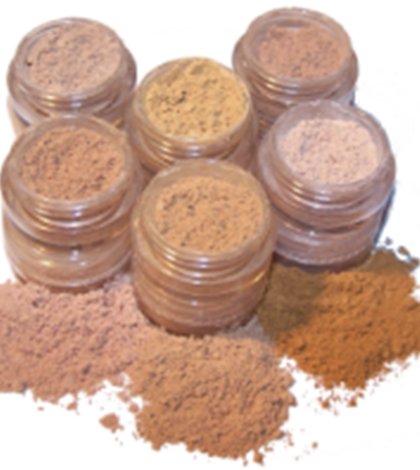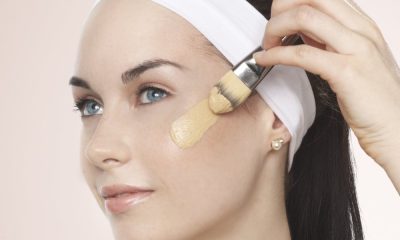Mineral makeup was once a hot new trend; now it is a staple in many of our makeup bags. Boasting the benefits of healthier skin, natural SPF, and a more even skin tone, mineral makeup is certainly worth the investment. You can even find mineral makeup as powder, cream, and liquid foundations, eye shadows, blushes, and lip colors. But not all brands or types are created equal or even good. Some brands contain fillers or harsh chemicals that can cause breakouts, rashes, or discomfort. Other, even inexpensive brands, live up to their claims for better, healthier skin and great coverage. Here are a few key ingredients to look for or avoid in your mineral makeup.
Zea mays. Zea mays is an interesting ingredient in mineral makeup. I was completely surprised that zea mays is basically a form of corn starch. The benefit of zea mays is that it is derived from an all-natural, renewable resource (corn). However, many people have undiagnosed allergies or sensitivity to corn, which will show up as breakouts from the makeup. Also, zea mays has a tendency to grow a form of mold that is harmless to most people, but may cause breakouts and mild rashes in those who are allergic to mold.
Bismuth oxychloride. This is the ingredient that adds shine and pearlessence to your mineral makeup, to giving you a healthy glow and a beautiful sheen. But bismuth oxychloride is a well-known skin irritant. It may even cause allergic reactions or breakouts in people with sensitive skin, especially with repeated and prolonged exposure. The more you use it, the more likely you will be to develop a sensitivity to makeup containing this ingredient.
Talc. Talc is, for the most part, an inexpensive filler in mineral makeup, although some claim that it adds a silky texture and prevents caking in loose powder. However, talc can clog pores and irritant skin, causing breakouts. Talc is not a necessary ingredient to mineral makeup, when in doubt, choose products that do not contain this ingredient.
Oxides and micas. Oxides and micas are the pigments in mineral foundation. They help give it color, shine, and the coverage needed to help your skin look great. Although they are derived from minerals, they are highly refined or synthesized in a lab.
Carmine. This is a unique red pigment made from the crushed shells of beetles. If this offends your stance on animal cruelty, you are not alone. This ingredient is pretty well-known for causing allergic reactions, even severe ones. Look for red products that do not contain this ingredient.
Keep in mind that price is not the most important factor when choosing a brand of mineral makeup. The most important factor is the product ingredients list. Look for the shortest list of ingredients that does not contain fillers or harsh chemicals. Less expensive brands may be just as good as more expensive brands. The best way to find out is to give them a try for a few weeks to see how your skin reacts. If you have any questions or concerns, see your dermatologist or other heath professional.


















